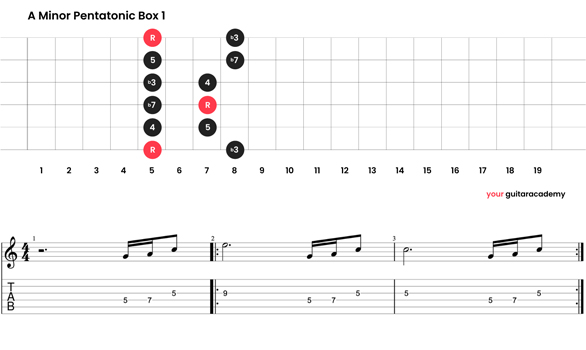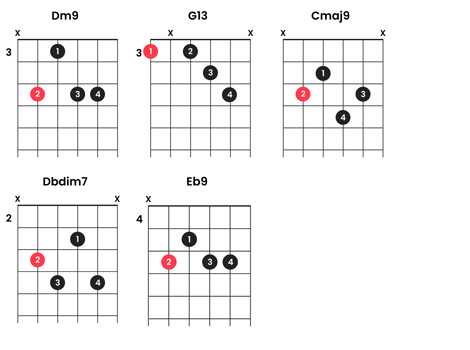3 ways to add some Tom Misch nu-jazz flavor to your guitar playing
How a fresh outlook on the pentatonic scale and some intuitive playing tweaks can help you harness Misch’s effortless grooves and melodic sensibilities

Neo-soul, nu-jazz and funk's recent rise to popularity among younger guitarists is in part thanks to Tom Misch. Characterized by simple-yet-effective melodies, infectious grooves and sophisticated chordal work, Misch’s playing style is one that many aspire to emulate.
In a new 20-lesson, four-unit course assembled by Your Guitar Academy, Misch’s approach to the electric guitar is surgically studied, with his handling of extended chords, rhythms, dynamics, grooves, scales and melodies all put under the microscope.
The following introductory lesson, complete with 23-minute video, begins the meticulous process of picking apart the basics of Misch’s guitar style, offering a variety of techniques you can introduce into your own playing, from intuitive tweaks to your approach to useful ways of working with the pentatonic scale.
Step one: The simple melody

First up, let's take the simple melody, which we're playing in box one of the A minor pentatonic scale. The tab for this melody and the scale shape can be found above.
Once we have the basic melody down, we can move on to the really fun stuff!
Step two: Adding the Misch flavor
Bouncing the groove
First up, try to add a bit more swing to the part. The word that comes to mind is "bouncy", so try and add that bubbly feel to the part. Dion walks you through that beautifully in the video, so give it a go.
Adding staccato
Staccato is simply the idea of playing shorter notes that don't ring out. We don't need to apply this to the entire phrase, but adding it to certain notes can be very effective. For example, adding it to the first three notes will make a huge difference to the sound. You'll also start to notice that as you add more of these techniques, they all compound together and you get bigger changes to the sound.
Sitting behind the beat
We're looking to try and play deliberately lazily here. It's a choice you make to essentially play all the notes, or some of the notes, slightly after the beat. It gives a very cool soul vibe and is very Tom Misch.
The human quality
You can now use your pick control to change the dynamics as you play through the part. By hitting some notes harder and others softer you get a variation in velocity that sounds far more vocal, and far more human. If you use programs like Logic Pro, this is the process of "humanization" to midi parts... Simply taking all the notes and randomly changing the velocities.
Semitone slides and trills
A simple to execute, and more tangible technique, is the semitone slide into keynotes. For example, if you slide into the final note of each bar from a semitone below, you get a very cool sound, that once again is very Tom Misch. You can also try trills, which is taking a note and sliding very quickly from side to side around it. Very hard to put into words, Dion walks you through it briefly in the video.
Envelope filter
Finally, the icing on the cake is to add an envelope filter. We talk a lot about the envelope filter in our full Tom Misch course.
Step three: Developing the lead line

Finally, we have some real fun jamming out the lead line and developing it in the same way Tom Misch would. Watch the video and have some fun with this yourself as you work through it. To help you along the way, if you want to get some chords down on a looper, the chords we are using can be found above.
- The lesson above contributes to an initial breakdown of Tom Misch’s playing style. To access the entire 20-lesson course demystifying Misch – which deals with chords, grooves and soloing – for free, head over to Your Guitar Academy.
Get The Pick Newsletter
All the latest guitar news, interviews, lessons, reviews, deals and more, direct to your inbox!
"Upgrading from your entry-level acoustic opens the door to an entirely new world of tonewoods, body shapes, and brands": 6 signs it's time to upgrade from your first acoustic guitar
"I'm past my prime": 5 common excuses for not learning the guitar – and 5 body and mind-boosting reasons you should







![Joe Bonamassa [left] wears a deep blue suit and polka-dotted shirt and plays his green refin Strat; the late Irish blues legend Rory Gallagher [right] screams and inflicts some punishment on his heavily worn number one Stratocaster.](https://cdn.mos.cms.futurecdn.net/cw28h7UBcTVfTLs7p7eiLe.jpg)


